History of Dericania: Difference between revisions
Tag: 2017 source edit |
Tag: 2017 source edit |
||
| (9 intermediate revisions by 2 users not shown) | |||
| Line 126: | Line 126: | ||
[[1204]]-[[1575]] Hanseatic League like group of cities in eastern [[Kingdom of Dericania]] 1427, Universitas Magistrorum in [[Port Diteaux]] [[1429]]- [[Order of the Obsidian Sparrow]], [[Crusades]] | [[1204]]-[[1575]] Hanseatic League like group of cities in eastern [[Kingdom of Dericania]] 1427, Universitas Magistrorum in [[Port Diteaux]] [[1429]]- [[Order of the Obsidian Sparrow]], [[Crusades]] | ||
==== County of | ==== County of Bergendiæ ==== | ||
[[File: | [[File:Banner of the Burgundian Cross of Burgundy.svg|200px|right]] | ||
[[1264]]-[[1549]] | [[1264]]-[[1549]] | ||
===== House of Palacin- | ===== House of Palacin-Diteaux ===== | ||
Template:House of Palacin- | Template:House of Palacin-Diteaux | ||
Main articles: List_of_Rulers_of_Burgundie § Palacin- | Main articles: List_of_Rulers_of_Burgundie § Palacin-Diteaux_Dynasty, and Palacin-Diteaux Dynasty | ||
1264-1418 Palacin- | 1264-1418 Palacin-Diteaux Dynasty | ||
==== Bishopric of | ==== Bishopric of Matiusvale ==== | ||
[[File:Banner of Matiusvale.gif|200px|right]] | |||
[[1264]]-[[1463]] | |||
1264-1463 | |||
==== Duchy of Burgondia ==== | ==== Duchy of Burgondia ==== | ||
| Line 226: | Line 226: | ||
The county was brutally unified with [[Burgundie]] in the [[First Fratricide]] despite a strong anti-mediatization stance. | The county was brutally unified with [[Burgundie]] in the [[First Fratricide]] despite a strong anti-mediatization stance. | ||
=== County of | === County of L'Ax-Canbon === | ||
| Line 232: | Line 232: | ||
=== Duchy of Bourgondi === | === Duchy of Bourgondi === | ||
{{Further|Duchy of Bourgondi}} | |||
[[File:BourgondiFlag.png|200px|right]] | [[File:BourgondiFlag.png|200px|right]] | ||
[[1575]]-[[1853]] | [[1575]]-[[1853]] | ||
| Line 254: | Line 255: | ||
===Caroline Wars and Fratricides=== | ===Caroline Wars and Fratricides=== | ||
====Vorenian union==== | ====Vorenian union==== | ||
Following the conclusion of the [[First Fratricide]], the Grand Duchy was ordered dissolved into its constituent parts by the peace treaty at the conclusion of the conflict, though the Grand Duchy would continue to fight long after the conclusion of hostilities. The Bergendii were unable to enforce treaty provisions upon the state, leading to low-level hostilities continuing until the Bergendii secured an unlikely alliance with the Duke of Upper Verecundia, who invaded and annexed Lower Verecundia in 1867. The Grand Duchy was subsequently defeated by the Bergendii and Vorenia lost its Grand Ducal position, becoming a "Marcher Principality" - a Margraviate with enhanced dignity. | Following the defeat of Emperor Louis in the [[War of the Caroline Succession]], the Grand Duchy of Verecundia was dissolved into its constituent parts, Lower and Upper Verecundia. By 1790, Lower Verecundia was inherited by the House Alessi-Galen, Dukes of Vorenia. As the princes of [[Kingdom of Dericania|Dericania]] formed a conspiracy to oust [[House de Weluta]] from the throne of the [[Emperor of the Levantines]], Vorenia-Lower Verecundia remained loyal during the uprising of the Duchy of Upper Verecundia in the 1790s. For their loyalty, Emperor Lucás III of [[House de Weluta]] granted House Alessi-Galen the Grand Ducal dignity, fusing the two realms together into the Grand Duchy of Vorenia. Alessi-Galen remained loyal to the de Welutas during the [[Second Caroline War]], partly due to their enmity with the [[Bergendii]] states to the southeast supporting the cause of Emperor Mauricio I. Magnanimous in victory, the Emperor allowed the Grand Duchy of Lower Verecundia and Vorenia to remain undivided following the conclusion of the war. | ||
Following the conclusion of the [[First Fratricide]], the Grand Duchy was ordered dissolved into its constituent parts by the peace treaty at the conclusion of the conflict, though the Grand Duchy would continue to fight long after the conclusion of hostilities. The [[Bergendii]] were unable to enforce treaty provisions upon the state, leading to low-level hostilities continuing until the Bergendii secured an unlikely alliance with the Duke of Upper Verecundia, who invaded and annexed Lower Verecundia in 1867. The Grand Duchy was subsequently defeated by the Bergendii and Vorenia lost its Grand Ducal position, becoming a "Marcher Principality" - a Margraviate with enhanced dignity. | |||
===Second Great War=== | ===Second Great War=== | ||
| Line 340: | Line 342: | ||
=== End of Derian national project === | === End of Derian national project === | ||
{{Main|Dissolution of the Deric States}} | {{Main|Dissolution of the Deric States}} | ||
==See also== | |||
*[[History of Burgundie]] | |||
{{Burgundie NavBox}} | |||
{{Holy Levantine Empire topics}} | |||
[[Category: Dericania]] | [[Category: Dericania]] | ||
[[Category: Holy Levantine Empire]] | [[Category: Holy Levantine Empire]] | ||
Latest revision as of 18:56, 27 July 2024
This article is a work-in-progress because it is incomplete and pending further input from an author. Note: The contents of this article are not considered canonical and may be inaccurate. Please comment on this article's talk page to share your input, comments and questions. |
The history of Dericania is primarily related to the history of Levantia as well as that of both Great Levantia and the Holy Levantine Empire, the latter of which originated out of and was based in Dericania. While being home to a diverse number of southern Levantine peoples and ethnic groups, much of the history of Dericania in recent centuries has dealt with questions of Derian identity, which became a primary driving factor in world history and was an underlying cause for both the Second Great War as well as the earlier establishment of Burgundie as an independent nation.
Prehistoric Eastern Levantia
3.3 million years ago to the advent of consistent Oral law, the earliest of which appeared c. 3200BC
Stone Age
Palaeolithic
Mesolithic
Neolithic
Chalcolithic
Bronze Age
Iron Age
Ancient history
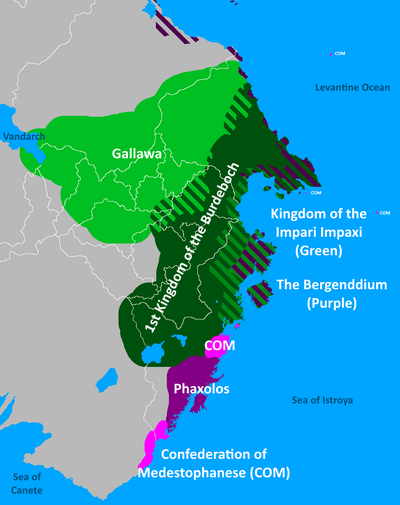
3200BC-598AD
Prior to the organization of the Holy Levantine Empire, including during the period of Great Levantine domination, "Dericania" as a cohesive geographical area in terms of polity and history did not exist. Historians have grouped together events largely by region - Northern, Southern, and Eastern Dericania - to convey the relevant actors, social movements, linked cultures, and individual historical figures that interacted with one another.
Pre-conquest Dericania
The historiographical term "pre-conquest Dericania" refers to the period prior to the arrival of the Adonerii and subsequent rise of Great Levantia.
Kingdom of the Ipari Impaxi
2800BC-164AD
Classical Antiquity and the Great Levantine period
Eastern Dericania
First Kingdom of the Burdeboch
527BC-285AD
The Bergenddium
150AD-598AD
In 158, Julian Marcilius Corvus, now styled Bergendus, was crowned the first high-king of the Bergenddium. While often seen as the first formal state that would become Burgundie, the Bergenddium was a cultural empire rather than a legal kingdom. As such, the title of high king was more of an honor given to men of distinction than a royal appointment with set roles and responsibilities. The only task undertaken by all of the high kings, and often the reason that later high kings where chosen, was to negotiate peace deals with larger Kiro-Levantine powers.
In 164, Julian Marcilius Corvus Bergendus commissioned a map of the Bergenddium which included all of the Ile Burgundie, most of the coast of modern Marialanus and some settlements along the coasts of Dericania and Fiannria.
Disparate emporium and Adonerii ports along the coast of Dericania began to centralize around their shared culture. This is seen as the divergence of the Bergendii from the general pool of Adonerii Latinics. They formed a few small private armies and navies to further the goals of the Bergendii merchants in the area. They refused to see a single monolithic central government, but often came to each other's aid and involved themselves in each other's politics, especially around trade agreements.
In the 130s an enterprising merchant, Julian Marcilius Corvus, formed an army in the naissant port of Nordarmus and marched inland to push the Impaxi tribes from the interior and ultimately on to Levantia. Over the next 20 years, his army was able to crush any opposition and then to push the Impaxi to the coast near Biscainhos. In 153 a joint Impaxi/Levzeish force crushed Corvus' forces. He escaped with only 75 men and his train. In 155 Corvus returned with a large navy and besieged Biscainhos, catching its navy in the harbor. After a three year siege and numerous heavy bombardments, the first sea-to-land naval bombardments in southern Levantine history, Corvus' forces forced the Impaxi/Levzeish population to surrender. As part of the surrender agreement the Impaxi and Levzeish were banished from Ipar and resettled on the coast of southern Levantia.
Southern Dericania
Confederation of Medestophanese
285AD-598AD Istroyan city-states
Tyranny of Phaxolos
134AD-285AD
Northern Dericania
Gallawa
Gallawa was a large confederation of Christianized Gaelic tribes and kingdoms that existed in the north of modern Dericania and south of modern Fiannria from the late 4th to 8th centuries AD. Gallawa was originally conceived as a loose alliance of Gaelic polities which had both broken into and settled Great Levantia from the north, those who had lived as foederati subjects in specific lands of Dericania, and a smaller number of mostly uncontacted tribes living in the hills and deep forested parts of northeaster Dericania. The alliance seems to have been intended as a means to consolidate Gaelic holdings in previously Great Levantine lands, but the alliance persisted beyond the latter's collapse. Gallawa supplanted Great Levantia as the major power in Dericania by around 450 AD, and its mandate switched from defensive to offensive, expanding its borders and incorporating other tribes under its sway by force of arms. Increasingly, the confederate nature of the alliance became centralized under the control of a family that would become known as the Conine dynasty, who were responsible for leading Gallawa through the collapse of the Levantines.
Gallawa experienced a major population boom at the end of the 7th century and began rapid and aggressive expansion, particularly against the Latin League and Hištanšahr, the latter with limited success. Following decades of skirmishing and raids, King Conchobar lead the armies of Gallawa west into the former heartlands of Great Levantia. Although initial successes by the Latin League under the leadership of Gaius Julius Cicurinus slowed Gallawa's advance, his replacement by the Latin League resulted in its complete destruction as Gallawa overcame most of the Latinic cities in the Valley. Following his peaceful seizure of Urceopolis, Conchobar reformed Gallawa into the Levantine Empire, which would be ruled by the Conine dynasty for the next century and a half.
Early Imperial period
Audonian invasion
Center of an Empire
Eastern Kingdom of the Levantines
In 917, upon the death of the Emperor Brian III, the Levantine Empire under the Conine dynasty was partitioned into three parts, roughly corresponding to modern day Urcea, Carna, and Dericania, with the latter portion known as the Eastern Kingdom of the Levantines. Passing from the Conine dynasty to the Leonine dynasty, King Leo, reformed the Holy Levantine Empire in 965 with his conquest of the Southern Kingdom of the Levantines, reunifying most of the realm and receiving subsequent recognition of the Pope. Historians debate when the name "Dericania" entered common use for the realm, but the "Eastern Kingdom" nomenclature was largely extinct by the late 11th century. The Kingdom of Dericania resulted from this shift, and would continue to exist until the end of the Empire in the 20th century.
High Medieval Dericania
While the Emperor of the Levantines used Dericania and its crown possession, Corcra, as a successful base of power from the 10th to the 14th century, the Kingdom mostly devolved into an area with the least central authority in the Empire by the 1400s. Several reasons are cited for the decline in crown power, but the fall primarily came the demise of the stem duchies dependent on Imperial support and the rise of hundreds of varied dynastic estates made the Kingdom administratively unwieldy and difficulty to govern. 917-1575
Eastern Kingdom of the Levantines
Main article: Eastern Kingdom of the Levantines
917-965
926-1847
- part of the Holy Levantine Empire
Kingdom of Eagaria
936-1071
Archbishopric of Rabascall-Bergendia
Main article: List_of_Rulers_of_Burgundie § Archbishopric_of_Rabascall-Bergendia
937-1264
- part of the Holy Levantine Empire
Upon the collapse of the Alvarus dynasty in 935 the clergy interceded as enforcers of public order. They drafted a militia and established courts, effectively taking control of the island. In 936, the bishop of Rabascall, a small coastal bishopric on mainland Levantia seized the opportunity to support the Archbishop of Bergendia with a militia drafted from his fief. He was able to quell the revolt in Vilauristre and the southeastern coast within a month but had orders to cease all activity as he was undermining the Archbishop's authority by being so successful. Rather than heed the order he marched to Vilauristre and seized the archdioceses buildings. Holding the Archbishop hostage, he demanded that the Pope intercede and name him the Archbishop of Bergendia as well as Rabascall. The letter never arrived at the Holy See, but at that point the Bishop of Rabascall had the Archbishop killed for inciting public unrest and heresy.
Holy Levantine Empire
Luciusian Dynasty
1036-1134
Crusades in Sarpedon
Main article: Crusades
1095–1291 The Luciusian reign was notable for the initiation of the Crusades in Sarpedon, in 1095. The Crusades consolidated the identity of the Empire and rested much more power in the Emperor. The various princelings who campaigned together began to see beyond their narrow fiefdoms and understand the vastness and diversity of the Empire but also of their commonality with each other. They all spoke Latin as well as their local tongue, they all worshiped in the same Church with the same rites. Some scholars have posited that the 12th century was the cultural birth of the Imperial identity.
Great Confessional War
Kingdom of Gassavelia
Main article: Kingdom of Gassavelia
1071–1568 War of the Three Princes, in 1071. Seoirge was crowned as the first King of Gassavelia by the Pope, incorporating the realm into the Empire. Removing the need to watch the southern border of the Empire, successive emperors looked northward and set about an age of expansionism across Levantia.
Vilauristre Conference

1204-1575 Hanseatic League like group of cities in eastern Kingdom of Dericania 1427, Universitas Magistrorum in Port Diteaux 1429- Order of the Obsidian Sparrow, Crusades
County of Bergendiæ
House of Palacin-Diteaux
Template:House of Palacin-Diteaux
Main articles: List_of_Rulers_of_Burgundie § Palacin-Diteaux_Dynasty, and Palacin-Diteaux Dynasty
1264-1418 Palacin-Diteaux Dynasty
Bishopric of Matiusvale

Duchy of Burgondia
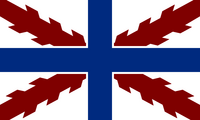
Order of the Obsidian Sparrow
Main article: Order of the Obsidian Sparrow
Error creating thumbnail: File missing
Founded in 1429, on the modern island province of Drusla, then known as Isulae Isti. They held the town of Hadua from 1429 until 1574. With the raising of the Joanusterrium to a Most Serene Duchy and election of Joanus de Martigueux to Grand Master of the Order, they retired from Hadua and moved their capital to Collinebourg.
Duchy of Marialanus
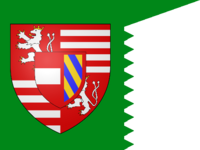
Great Confessional War
Plague of 1561
Plague of 1571
Truffle Races
Colonial ventures
Marialanii Ularien Trading Company (MUTC) established:
- Ayermer colony (1616-????)
- Kandoora colony (1600-1795)
- Far East Colony (1638-1817)
- Barbary Straits colony (1635-1836)
- Torlen colony (???? - 1875)
County Palatine of Estia

Great Confessional War
Main article: Great Confessional War
1555-1575
Late Imperial period
Renaissance Dericania
While several attempts at reform were made in the 1490s, lack of central authority was permanently established because of the Protestant Reformation. Despite its lack of tangible political authority, Dericania was by far considered the most prestigious of the constituent Kingdoms of the Holy Levantine Empire, and a majority of Emperors of the Levantines were elected from Dericania.
During the Great Confessional War, the lands of Dericania were ravaged by war. Significant outbreaks of disease and widespread famine were a result of the conflict, greatly weakening Dericania and making most of the Kingdom significantly poorer. Many nobles and lords lost their fiefs and significant amount of territory changed hands during the Dragonnades as Protestant families were displaced by those loyal to the victorious Holy League.
Age of Discovery
Trade Company Empires
Main article: Burgoignesc Colonial Empire
As part of this new period of self-rule, the Dukes created a series of trading companies that sought to raise the clout of the duchy and enrich themselves. They pushed the bounds of the maritime technology at the time and traveled around the world looking for fertile trade and investment opportunities. The largest and most storied companies were the Burgundian West Punth Trading Company and the Burgundian Grand Crona Trading Company. Unlike the other trading companies, these two set out on a path of colonization that, at their heights, covered all of Alshar and large swaths of south-central Crona.
Principality of Faramount

Duchy of Martilles
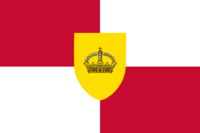
Truffle Races
Orixtal Crusade
Colonial ventures
Martillien North Levantine Trading Company (MNLC) established:
- Eloillette (1611-1795)
- Chaukhira colony (tbd)
- Veraise colony (1593 - 1812)
- Nauta Normand colony (tbd)
- Wintergen colony (1823-1869)
County Palatine of Pumbria

The county was brutally unified with Burgundie in the First Fratricide despite a strong anti-mediatization stance.
County of L'Ax-Canbon
1575-1850
Duchy of Bourgondi
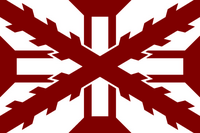
Truffle Races
Colonial ventures
Bourgondii Royal Trading Company (BRTC) established:
- Colony of Santasi (1646-1721)
- Pukhgundi colony (1635-1811)
- Istroya Oriental colony (1577-1842)
- Kandahari-Pukhtun colony (1615-1830s)
- Sudmoll colony (1702-1876)
- Islevenin colony (???? - 1899)
- Medimeria colony (1578-2014)
- Equitorial Ostiecia colony (tbd)
Early modern Dericania
During the late 18th and 19th century, the rise of Burgundie and the First Fratricide lead to chaos and disorder in Dericania that would continue until its demise in the 20th century.
Caroline Wars and Fratricides
Vorenian union
Following the defeat of Emperor Louis in the War of the Caroline Succession, the Grand Duchy of Verecundia was dissolved into its constituent parts, Lower and Upper Verecundia. By 1790, Lower Verecundia was inherited by the House Alessi-Galen, Dukes of Vorenia. As the princes of Dericania formed a conspiracy to oust House de Weluta from the throne of the Emperor of the Levantines, Vorenia-Lower Verecundia remained loyal during the uprising of the Duchy of Upper Verecundia in the 1790s. For their loyalty, Emperor Lucás III of House de Weluta granted House Alessi-Galen the Grand Ducal dignity, fusing the two realms together into the Grand Duchy of Vorenia. Alessi-Galen remained loyal to the de Welutas during the Second Caroline War, partly due to their enmity with the Bergendii states to the southeast supporting the cause of Emperor Mauricio I. Magnanimous in victory, the Emperor allowed the Grand Duchy of Lower Verecundia and Vorenia to remain undivided following the conclusion of the war.
Following the conclusion of the First Fratricide, the Grand Duchy was ordered dissolved into its constituent parts by the peace treaty at the conclusion of the conflict, though the Grand Duchy would continue to fight long after the conclusion of hostilities. The Bergendii were unable to enforce treaty provisions upon the state, leading to low-level hostilities continuing until the Bergendii secured an unlikely alliance with the Duke of Upper Verecundia, who invaded and annexed Lower Verecundia in 1867. The Grand Duchy was subsequently defeated by the Bergendii and Vorenia lost its Grand Ducal position, becoming a "Marcher Principality" - a Margraviate with enhanced dignity.
Second Great War
Deric Republic
Deric Republic | |
|---|---|
|
Flag | |
| Capital | Corcra (claimed) |
| Official languages | Latin |
| Demonym(s) | Deric (noun) Derian (adjective) Derians (plural) |
| Government | Provisional federal government |
• National Prefect | Cornelius Ahenobarbus |
| Free State Assembly | |
| Independence | |
• from Holy Levantine Empire | 13 November 1928 |
• Dissolved | 4 September 1935 |
| Currency | Lira |
The Deric Republic was a provisional federal republic formed during the first phase of the Second Great War in order to unite the various factions fighting for independence from the Holy Levantine Empire and establishment of a Derian state. Despite consistent infighting between the disparate factions that comprised the Republic, it successfully managed to unite much of the former Kingdom of Dericania's industry and militias into a coherent war effort. The Deric Republic began to descend into infighting in 19XX-19XX, and the liberal faction of the Derian nationalists opened negotiations for a peaceful settlement with Urcea and the remainder of the Holy Levantine Empire. With the Royal and Imperial Army on the advance in the face of a rapidly deteriorating state, the Deric Republic agreed to dissolve itself as part of the Treaty of Corcra, the centerpiece of the peace ending the Second Great War in Levantia. Following the signing of the treaty, the territories of the former Kingdom of Dericania and Deric Republic descended into the Third Fratricide between pro- and anti-treaty forces, with the pro-treaty forces forming the Derian National Congress after the Republic's dissolution.
Dissolution of the Kingdom
Post-War period
The Kingdom of Dericania was dissolved with the Emperor of the Levantines relinquishing authority over it in 1935, leading to a period of significant domestic tumult and infighting known as the Third Fratricide. Following the end of the Second Great War, the former parts of the Kingdom of Dericania reformed into the Deric States, a loose confederation of many former states of Dericania which had consolidated during the war.
Third Fratricide
Establishment of the Deric States
Levantine incorporation
End of Derian national project
See also